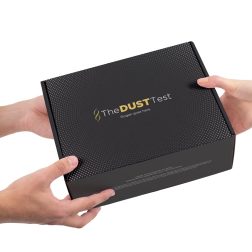No products in the cart.
Mold Resources
What is ERMI Testing?
ERMI testing stands for Environmental Relative Moldiness Index and is a methodology developed by the EPA to estimate and assess mold contamination within a building. The test collects dust samples and analyzes the DNA of mold spores found within those samples. These results are compared against a known ERMI index to estimate the amount of mold present and to identify some species of mold present.
How Does ERMI Testing Work?
ERMI testing uses MSQPCR (mold-specific quantitative polymerase chain reaction) to “magnify” the DNA of molds spores present in dust and create a clear picture of what exists in a home. The test checks for 36 different species of mold, 26 of which are commonly found in water damaged buildings (WDB) and 10 of which are not associated with WDB.
The 26 WDB species are called group one and the 10 non-WDB species are group two. The index and creates an ERMI score that is based on the difference between groups one and two, with a scale ranging from -10, the lowest possible score, to 20, the highest. For example, a home with a score of 14 would be in the top 25% of homes for relative mold burden.
Pros and Cons of ERMI Testing
The benefits of ERMI testing come from the highly specialized and accurate results of MSQPCR analysis of mold spore DNA. This presents a clear and objective picture of spores present in the dust within a home and can provide valuable insight into whether there are any any potential mold sources in the home, specifically whether or not they are likely to have resulted from some sort of water damage event . ERMI testing provides a solid, generalized picture of spore levels in a home and can also help to provide insight into the long-term history of water damage and mold growth within a home.
That said, ERMI testing alone is not adequate as the test has several serious limitations. ERMI testing should always be used in concert with other, more directed, forms of testing like air sampling and surface swabs. The key thing to remember, though, is that ERMI testing is just a tool in the tool belt; it’s supposed to be used in conjunction with other testing methods like air sampling and surface swabs. It should not be used as the single method to determine mold levels within a home.
Speaking of limitations. ERMI testing does not provide readily quantifiable results. It’s difficult to take repeatable and consistent samples with ERMI unlike, say, with air sampling. With air sampling, air is drawn over testing media for a specified period of time and at a specified pressure, meaning that the volume of samples taken are consistent and that spore counts measured are much more directly correlated to current conditions. ERMI testing, on the other hand, samples an unknown volume of dust and simply records which spores it picks up.
This lack of repeatability of an ERMI test that diminishes its ability to accurately provide a picture of current conditions. Spores recorded by an ERMI test would have had an unknown amount of time to settle into the dust collected, so while an ERMI test will very accurately tell you which spores are present, it cannot give you an idea of which ones are actively being released in a home versus which ones may have been months old. Furthermore, ERMI testing does not help determine sources of active growth as, unlike swabbing or air sampling, it isn’t directed at a specific area of the home and paints a much broader picture of conditions in a home generally.
Opt For The Dust Test
The Dust Test is a better indicator of what’s going on in your home. It combines cutting-edge DNA and chemical sequencing technologies to identify the full load of invisible fungal and toxic fragments in any home. This includes determining and quantifying mold species, mycotoxins types, and endotoxins. If you want to know if you have mold, bacteria, or toxins, this is the most cost-effective way to answer that question.
This consumer-based test is one that you can do on your own to collect dust and look for abnormalities. The Dust Test includes a combination of MSQPCR and other testing methods that identify mold, mycotoxins, and endotoxins in one kit. Hence why it’s superior to ERMI Testing. It doesn’t tell you where the problems are but answers the question of whether you have problems. This is a great first step because you then have the data before you bring in an inspector, ensuring that they’re accountable for finding the sources of the problems.
If you’re experiencing chronic symptoms, you should also contact a qualified medical professional familiar with helping clients who are dealing with environmental exposures so that they can help you on the path to healing.
Showing the single result
Still Have Questions?
A member of our team is here to help! Click on “Get Started ➤” below to book a consultation with a member of the HOMECLEANSE team. We have a few quick questions that will help us put together a roadmap to solve or prevent all of your mold problems.
Two minutes of your time could lead to better health for you and your family.

